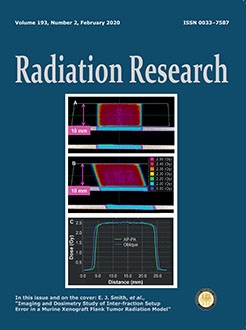Quantification of radiation dose to normal tissue during radiotherapy is critical for assessing risk for radiotherapy-related late effects, including subsequent neoplasms (SNs). Case-control studies of SNs typically reconstruct absorbed radiation dose to the specific SN location using individual treatment parameters. A simplified method estimates the maximum prescribed target dose to the body region in which the SN arises. We compared doses and risk estimates from these methods using data from case-control studies of subsequent brain tumors (64 cases, 244 controls) and breast cancer (94 cases, 358 controls) nested within the Childhood Cancer Survivor Study (≥5-year survivors of childhood cancer diagnosed 1970–1986). The weighted kappa statistic [95% confidence interval (CI)] evaluating agreement between categorical (>0–9.9/10–19.9/20–29.9/≥30 Gy) body-region and tumor location-specific doses was 0.95 (0.91–0.98) for brain and 0.76 (0.69–0.82) for breast. The body-region and location-specific doses were assigned to the same dose category for a smaller proportion of patients treated with fields delivering a heterogeneous dose across the tissue of interest (e.g., partial brain field = 57.1%; mantle field = 61.3%) than patients treated with fields delivering a more homogeneous dose (e.g., whole brain field = 100%). Excess odds ratios per Gy (95% CI) from conditional logistic regression were 1.25 (0.33–6.33) and 1.20 (0.31–6.14) for brain tumors and 0.21 (0.05–0.77) and 0.10 (0.02–0.44) for breast cancer, using location-specific and body-region doses, respectively. We observed that body-region doses can approximate location-specific doses when the tissue of interest is clearly in the radiation field or outside the treated body region. Agreement is lower when there is greater ambiguity of SN location relative to the treatment field.
How to translate text using browser tools
3 December 2019
Comparison of Radiation Dose Reconstruction Methods to Investigate Late Adverse Effects of Radiotherapy for Childhood Cancer: A Report from the Childhood Cancer Survivor Study
Sara J. Schonfeld,
Rebecca M. Howell,
Susan A. Smith,
Joseph P. Neglia,
Lucie M. Turcotte,
Michael A. Arnold,
Peter D. Inskip,
Kevin C. Oeffinger,
Chaya S. Moskowitz,
Tara O. Henderson,
Wendy M. Leisenring,
Todd M. Gibson,
Amy Berrington de González,
Joshua N. Sampson,
Stephen J. Chanock,
Margaret A. Tucker,
Smita Bhatia,
Leslie L. Robison,
Gregory T. Armstrong,
Lindsay M. Morton
ACCESS THE FULL ARTICLE

Radiation Research
Vol. 193 • No. 2
February 2020
Vol. 193 • No. 2
February 2020




